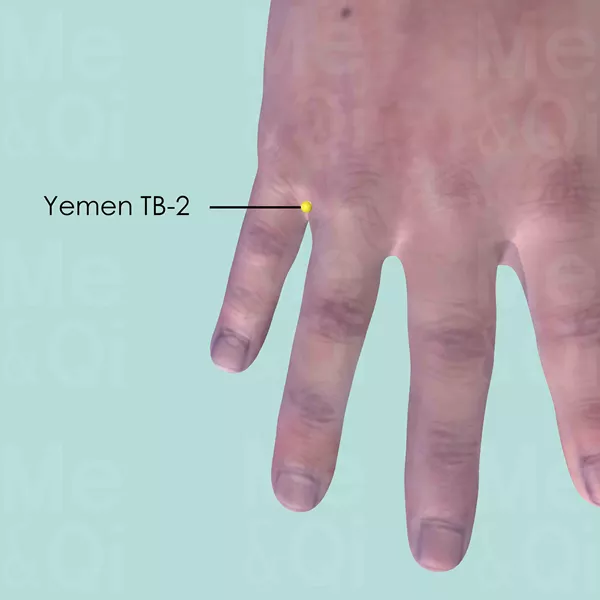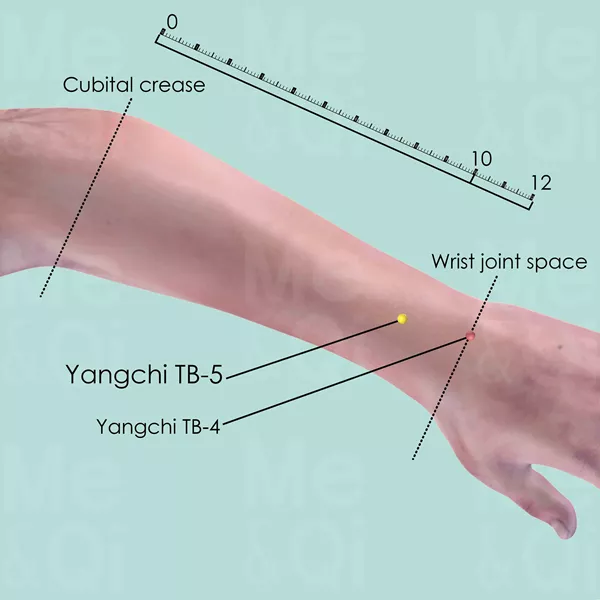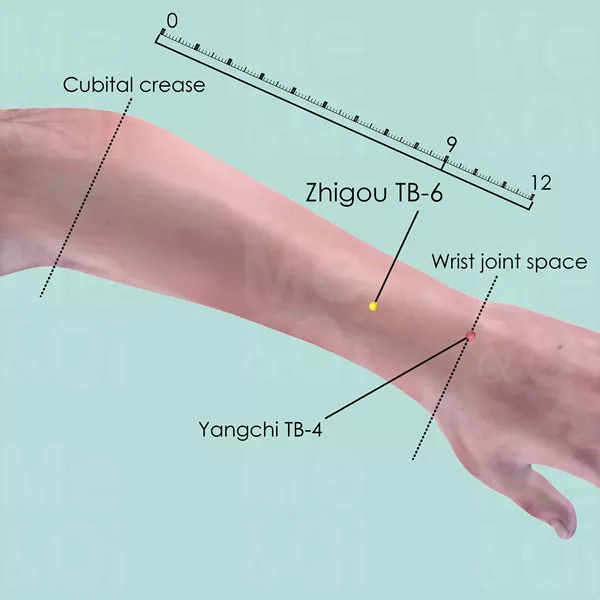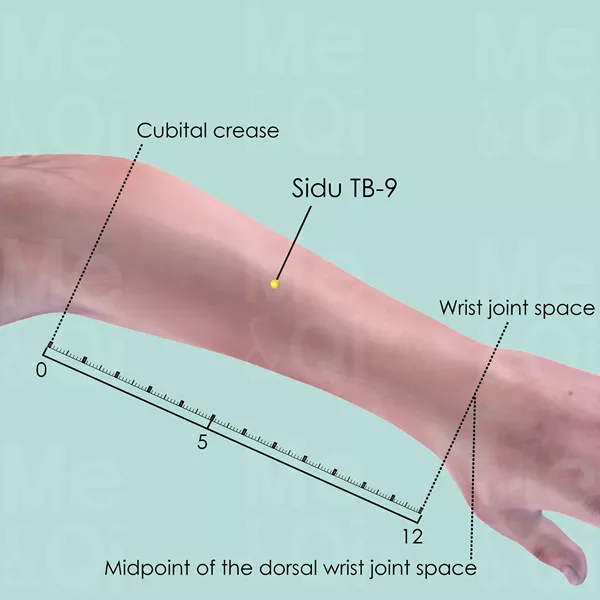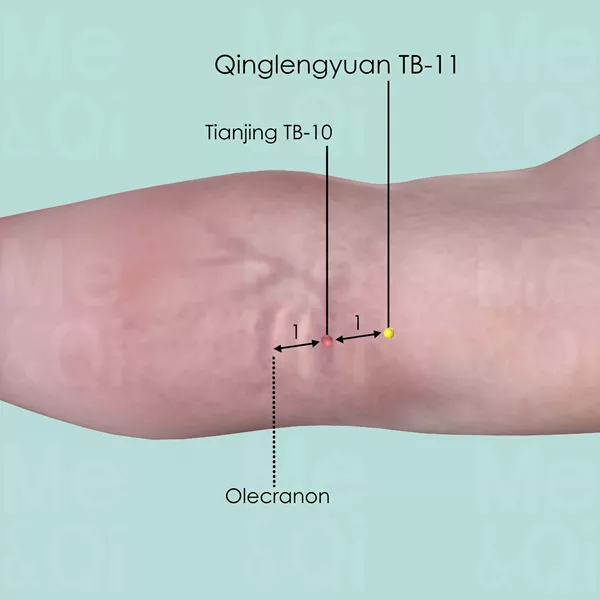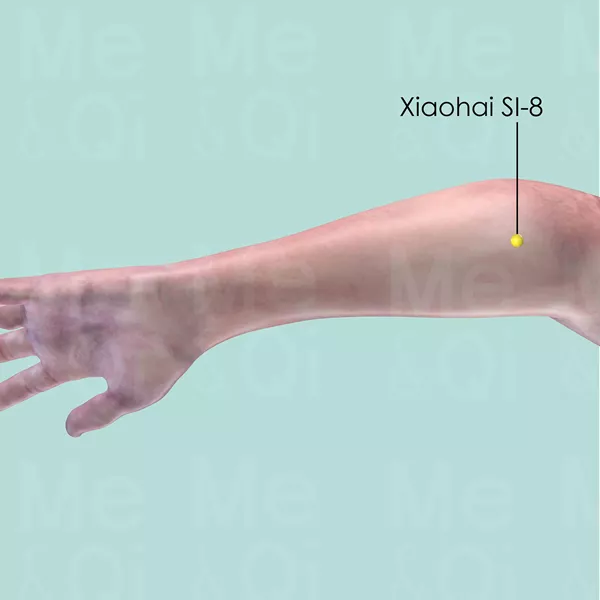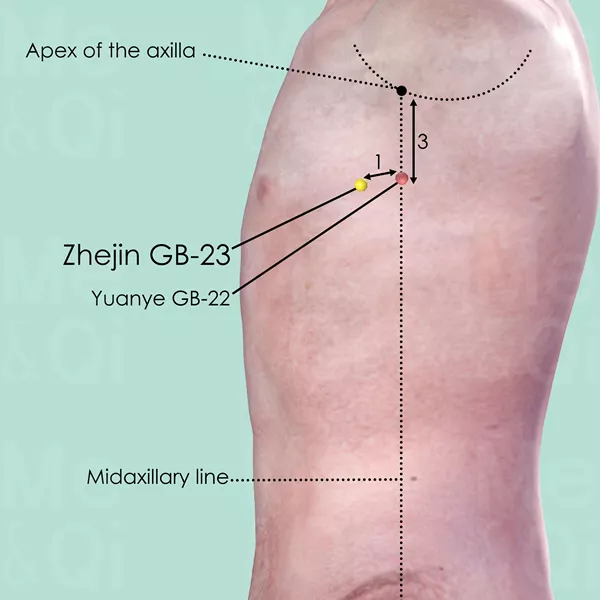Arm Painaccording to TCM
Symptom families: Limb Pain and Discomfort, Arms disorders and Symptoms
Parent symptom: Painful Extremities
Sub-symptom(s): Upper Arm Pain Forearm Pain
What is Arm Pain?
Arm pain refers to discomfort or aching in any part of the upper extremities, from the shoulder to the fingertips. This pain can manifest as a sharp, stabbing sensation or a dull, persistent ache, often affecting one's ability to perform daily tasks. Arm pain can arise from various causes, including muscle strains, nerve injuries, joint inflammation, or underlying conditions such as arthritis. It is a common symptom that can significantly impact one's quality of life, necessitating a thorough understanding and appropriate management.
How does TCM view Arm Pain?
Traditional Chinese Medicine (TCM) views arm pain as a manifestation of underlying imbalances within the body's energy system. Unlike Western medicine, which typically focuses on physical causes, TCM considers patterns of disharmony such as Qi And Blood Stagnation, invasion of Wind-Cold-Damp, or Daeficiencies in vital energies. Identifying the specific pattern of disharmony is crucial for effective treatment, as TCM aims to address the root cause of the pain, providing a more holistic approach to healing.
Acupoints for Arm Pain
In TCM, acupuncture is often used to treat arm pain by stimulating specific acupoints to restore balance and promote healing. In the Triple Burner Channel, Huizong ST-7, located 3 cun proximal to the dorsal wrist joint space, is used to remove obstructions from the channel and benefit the ears. Jianliao TB-14, found posterior and inferior to the acromion, helps remove obstructions from the channel. Naohui TB-13, on the line joining Jianliao TB-14 and the olecranon, also removes obstructions and phlegm. Qinglengyuan TB-11, located 1 cun above Tianjing TB-10, expels Damp-Heat and removes obstructions.
In the Small Intestine Channel, Bingfeng SI-12, situated in the center of the suprascapular fossa, opens the channel. Jianwaishu SI-14, 3 cun lateral to the lower border of the spinous process of the 1st thoracic vertebra, expels Wind and opens the channel. Naoshu SI-10, directly above JianZhen SI-9, is used to open the channel. Qiangu SI-2, on the ulnar aspect of the little finger, expels Wind-Heat, opens the chest, and benefits the eyes, nose, and ears. These acupoints, when stimulated, can help alleviate arm pain, improve circulation, and restore harmony within the body, promoting overall well-being.
Explore below some acupoints used to address arm pain, organized by meridian.
- By Meridian
- Triple Burner Channel
- Small Intestine Channel
- Large Intestine Channel
- Lung Channel
- Gall Bladder Channel
- Pericardium Channel
- Stomach Channel
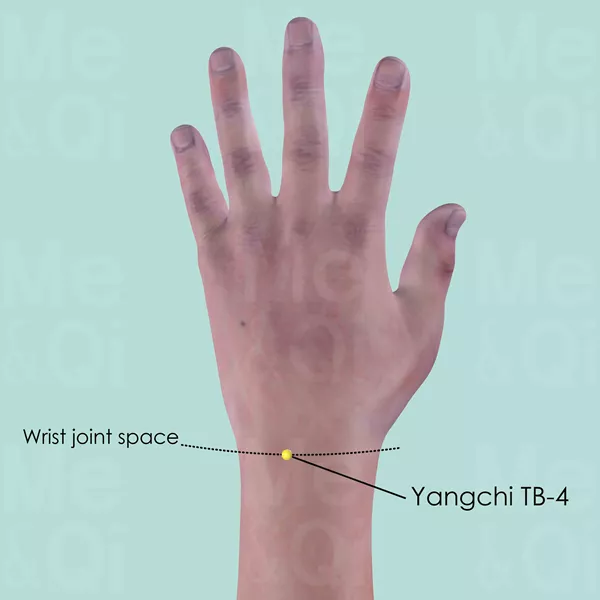
Yangchi TB-4
At the junction of the ulna carpal bones of the wrist dorsum, in the depression lateral to the tendon of extensor digitorum and extensor digiti minimi muscle.
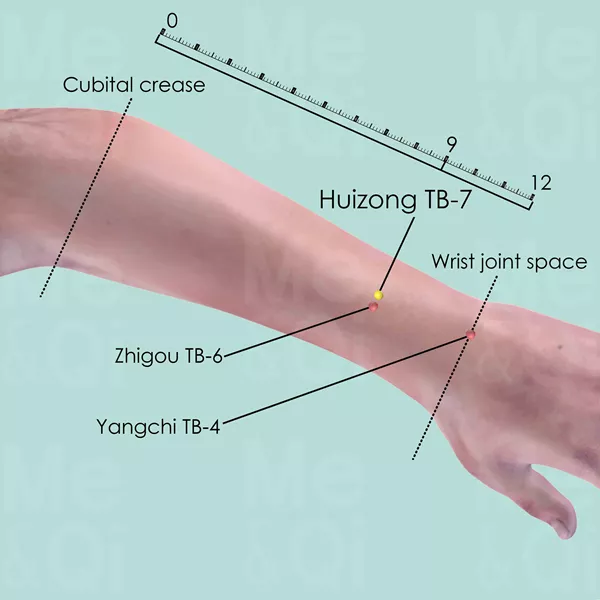
Huizong ST-7
3 cun proximal to the dorsal wrist joint space and 0.5 cun ulnar to the forearm center.
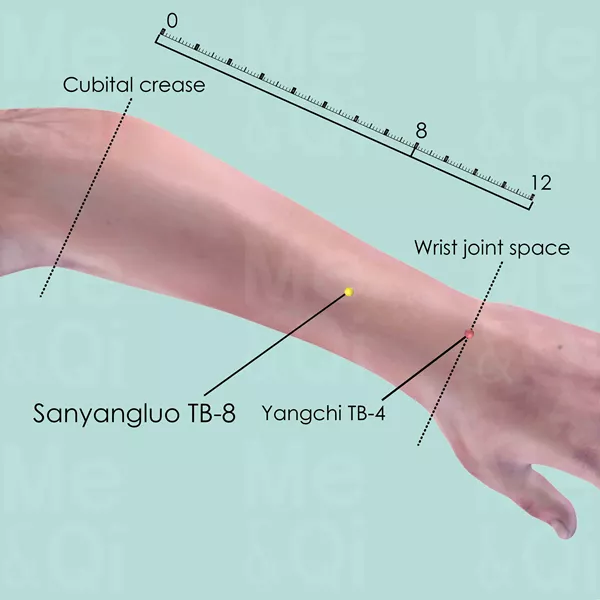
Sanyangluo TB-8
Between the radius and the ulna, 4 cun above Yangchi TB-4, which is on the dorsal wrist joint space.
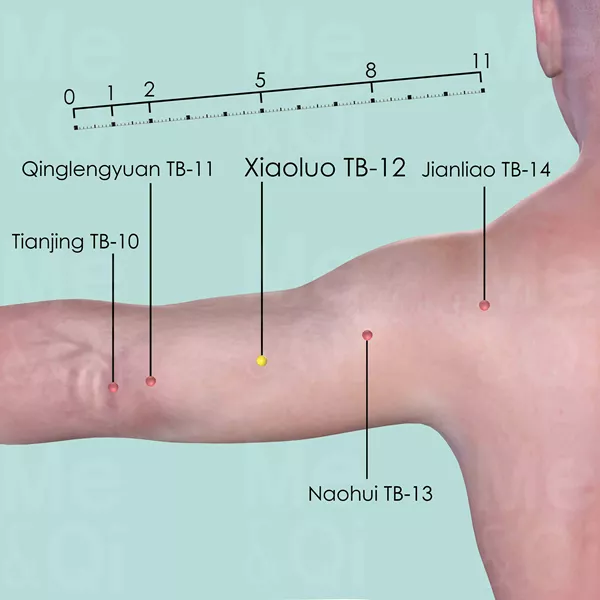
Xiaoluo TB-12
On the line joining the olecranon and Jianliao TB-14, midway between Qinglengyuan TB-11 and Naohui TB-13, 5 cun proximal to the olecranon. It is just on the lower end of bulge of the lateral head of triceps brachii when the forearm is in pronation.
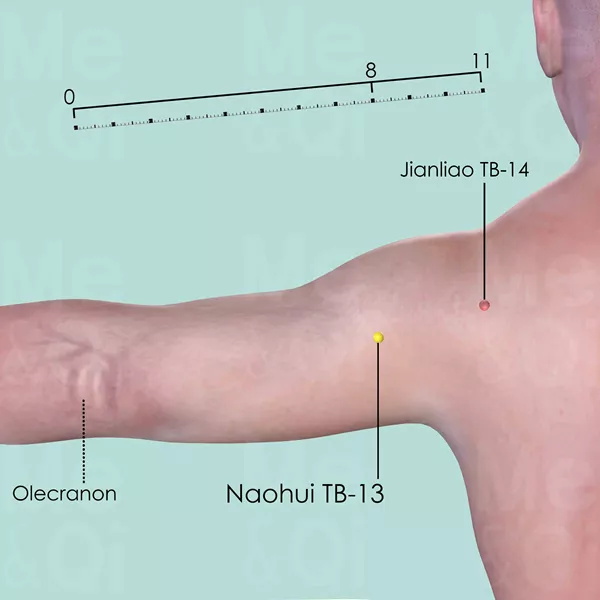
Naohui TB-13
On the line joining Jianliao TB-14 and the olecranon, 3 cun below Jianliao TB-14 which is at the lateral extremity of the acromion. Naohui TB-13 is on the posterior border of deltoid muscle.
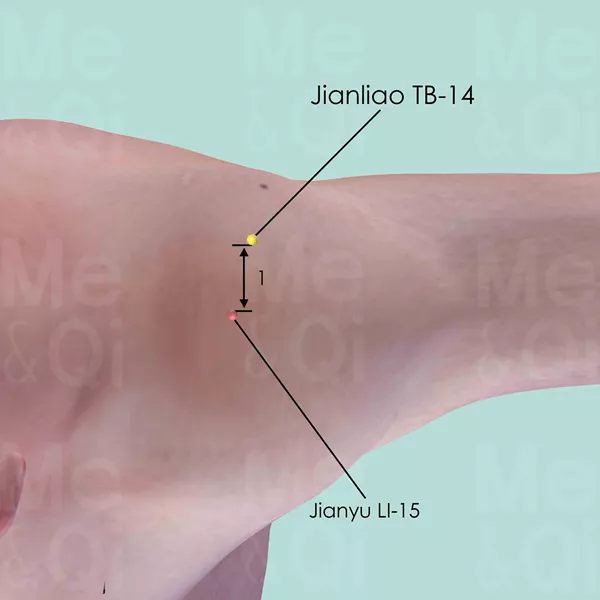
Jianliao TB-14
Posterior and inferior to the acromion, in the depression about 1 cun posterior to Jianyu LI-15.
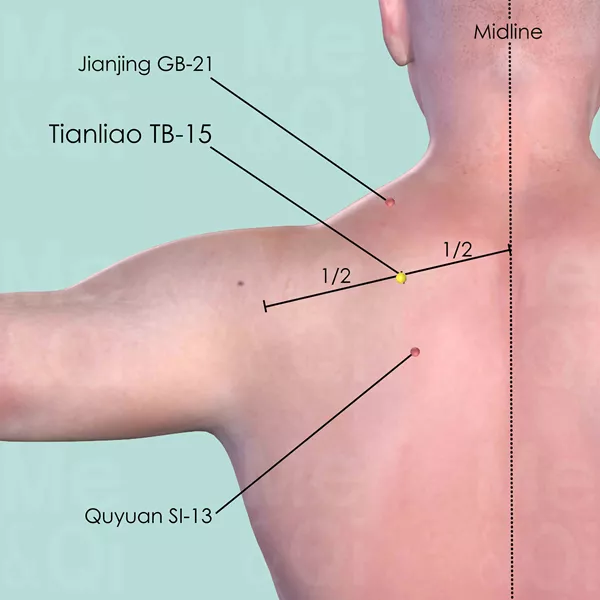
Tianliao TB-15
Midway between Jianjing GB-21 and Quyuan SI-13, on top of the superior angle of the scapula.
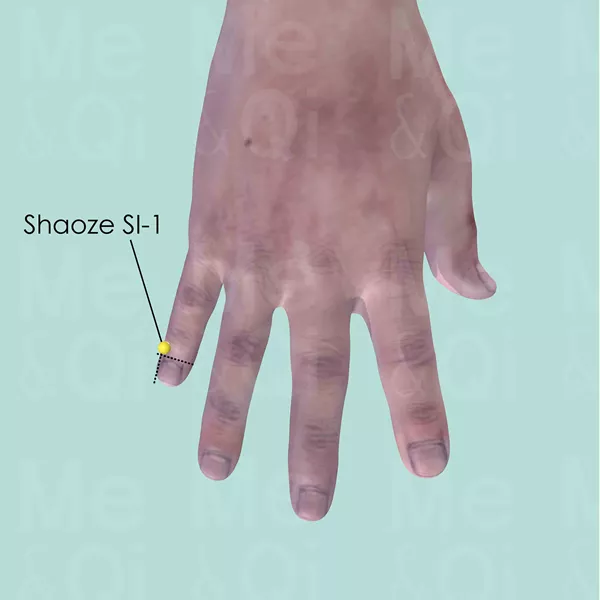
Shaoze SI-1
On the ulnar side of the little finger, about 0.1 cun posterior to the corner of the nail.
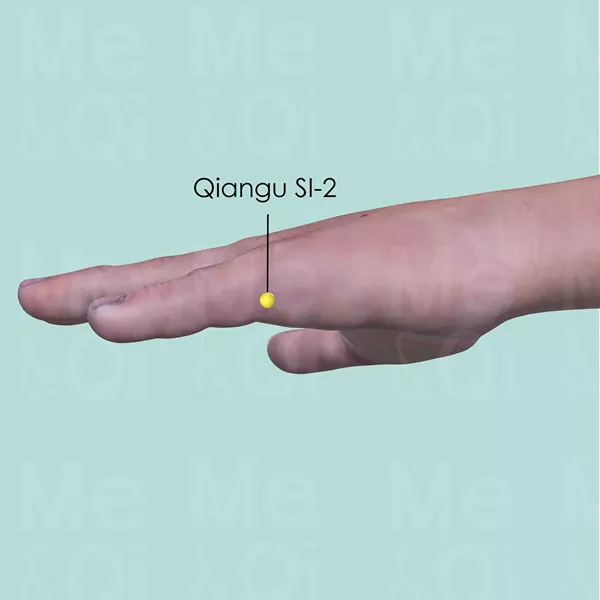
Qiangu SI-2
On the ulnar aspect of the little finger, distal to the metacarpophalangeal joint, at the junction of the shaft and the base of the proximal phalanx.
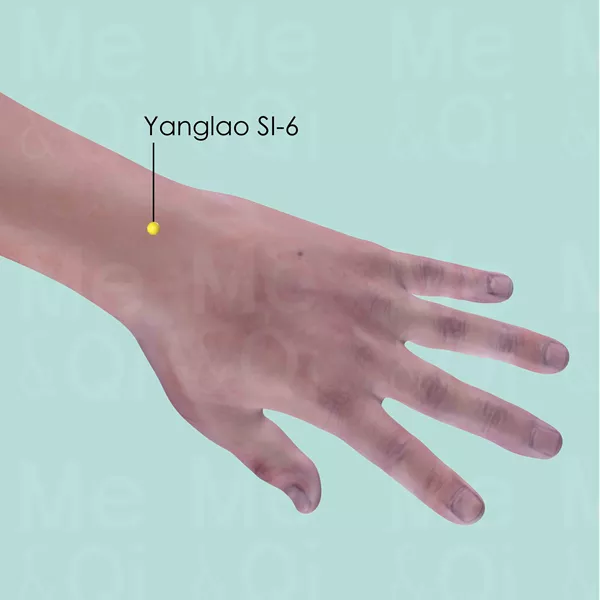
Yanglao SI-6
Dorsal to the head of the ulna. When the palm faces the chest, Yanglao SI-6 is in the bony depression on the radial side of the styloid process of the ulna.
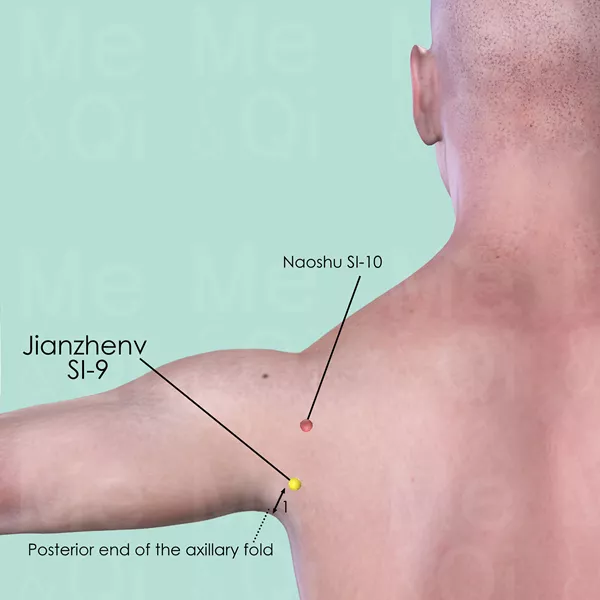
Jianzhen SI-9
Posterior and inferior to the shoulder joint. When the arm is adducted, Jianzhen SI-9 is 1 cun above the posterior end of the axillary fold. Naoshu SI-10 is located directly above Jianzhen SI-9.
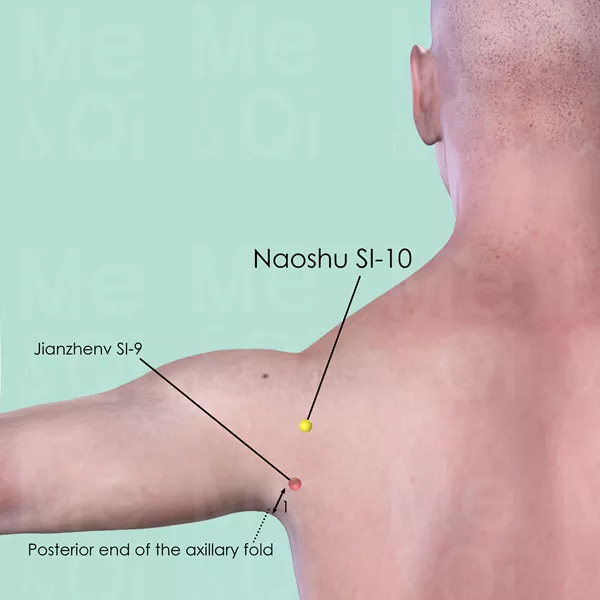
Naoshu SI-10
When the arm is adducted, Naoshu SI-10 is directly above JianZhen SI-9, in the depression inferior and lateral to the scapular spine.
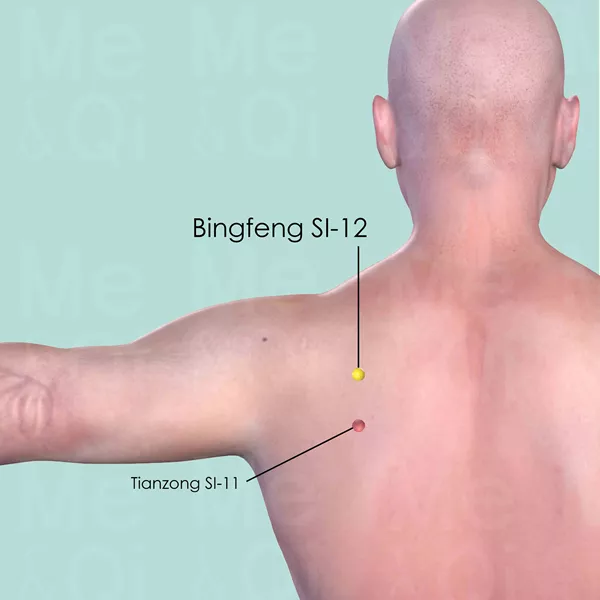
Bingfeng SI-12
In the center of the suprascapular fossa, directly above Tianzong SI-11. When the arm is lifted, the point is at the site of the depression.
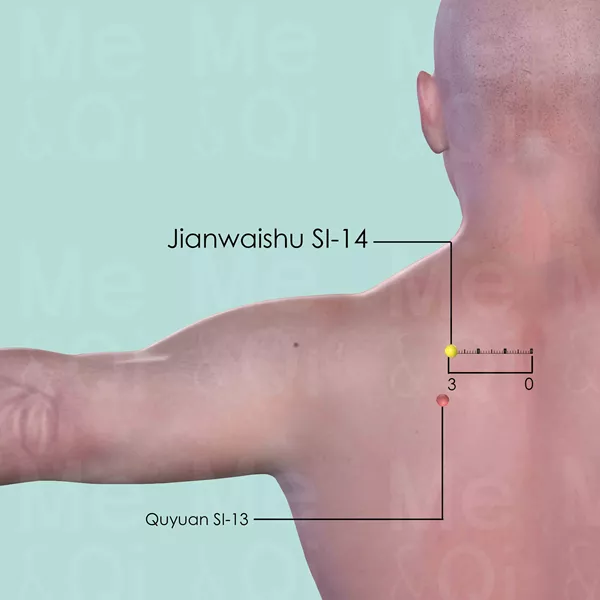
Jianwaishu SI-14
3 cun lateral to the lower border of the spinous process of the 1st thoracic verrtebra (T1), on the vertical line drawn from the levator scapulae muscle.
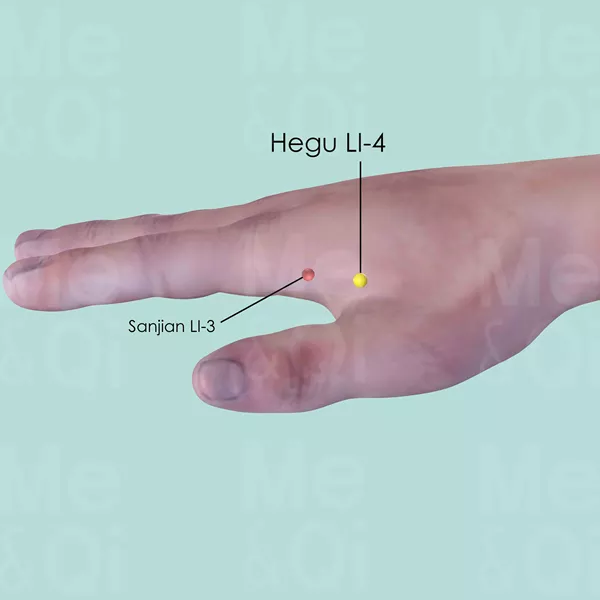
Hegu LI-4
Between the 1st and 2nd metacarpal bones, approximately in the middle of the 2nd metacarpal bone on the radial side.
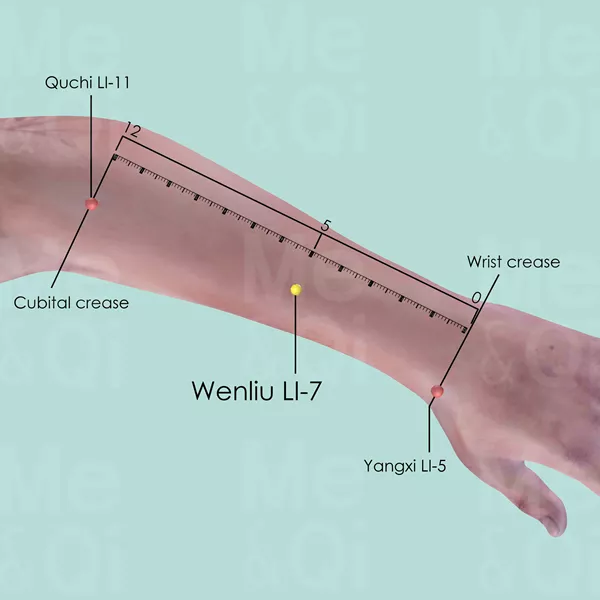
Wenliu LI-7
When a fist is made, with the ulnar side downward and elbow flexed, the point is 5 cun above Yangxi LI-5 at the wrist crease, 1 cun distal to the midpoint of the line joining Yangxi LI-5 and Quchi LI-11.
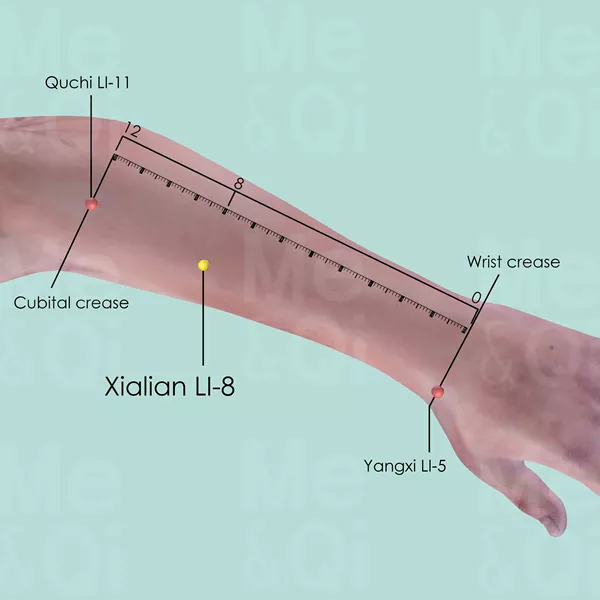
Xialian LI-8
When a fist is made, with the ulnar side downward and elbow flexed, the point is 4 cun distal to Quchi LI-11 of the line joining Yangxi LI-5 and Quchi LI-11.
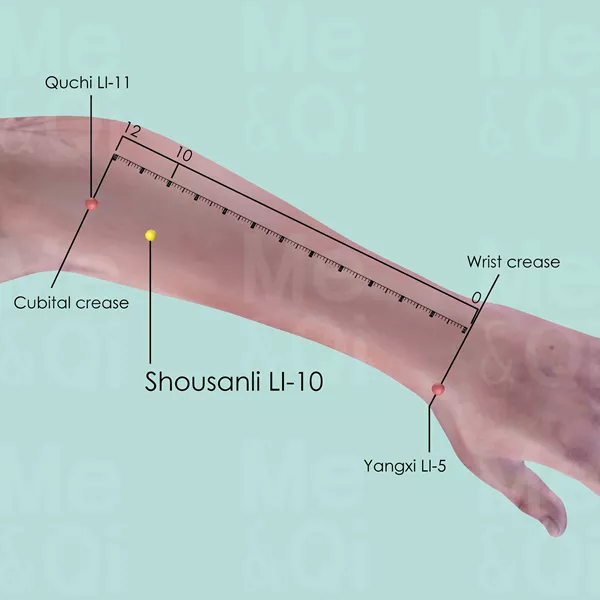
Shousanli LI-10
When a fist is made, with the ulnar side downward and elbow flexed, the point is 2 cun distal to Quchi LI-11 of the line joining Yangxi LI-5 and Quchi LI-11.
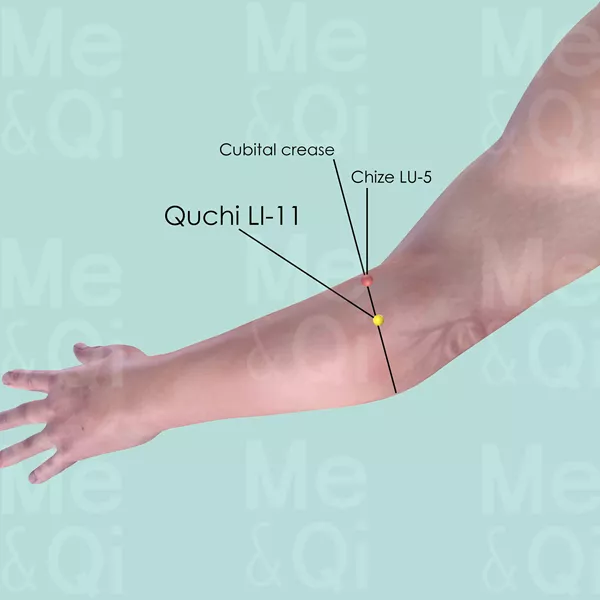
Quchi LI-11
When the elbow is flexed, Quchi LI-11 is in the depression at the lateral end of the cubital crease, midway between Chize LU-5 and the lateral epicondyle of the humerus.
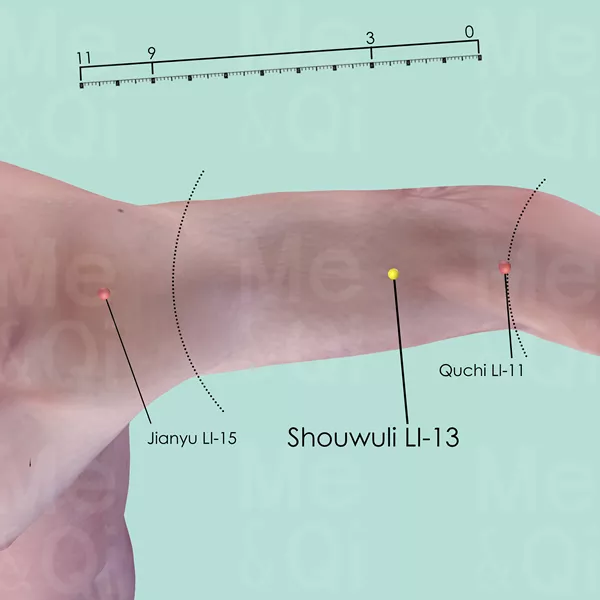
Shouwuli LI-13
Superior to the lateral epicondyle of the humerus, 3 cun above Quchi LI-11, on the line connecting Quchi LI-11 and Jianyu LI-15.
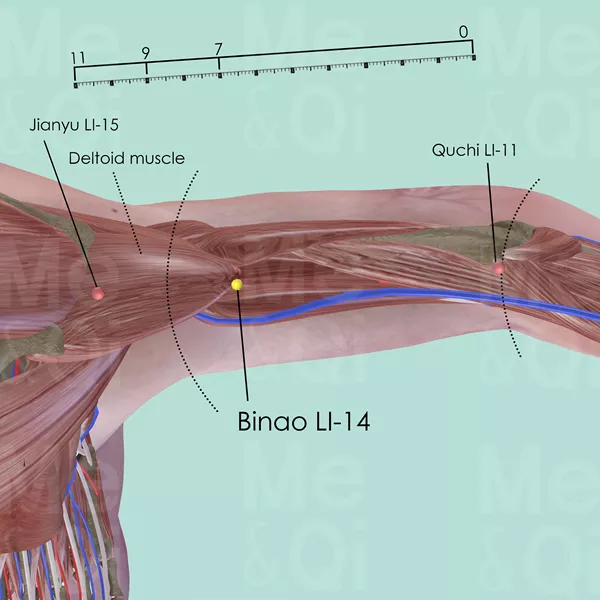
Binao LI-14
On the radial side of the humerus, superior to the lower end of deltoid muscle, on the line connecting Quchi LI-11 and Jianyu LI-15, 7 cun proximal to Quchi LI-11.
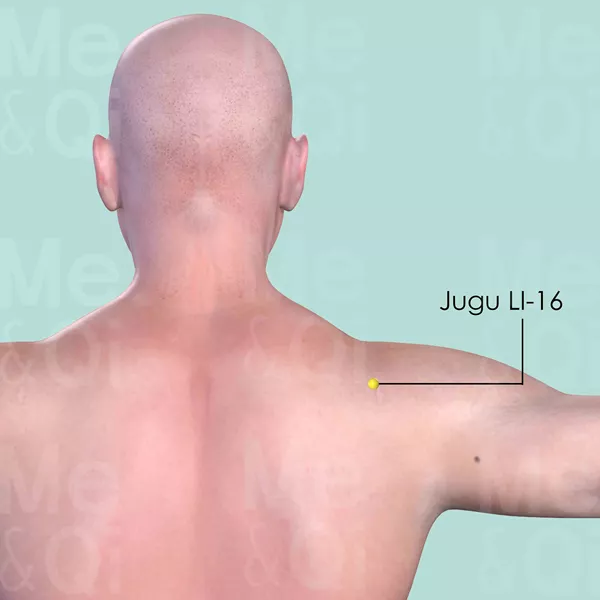
Jugu LI-16
In the upper aspect of the shoulder, in the depression between the acromio-clavicular joint and the scapular spine.
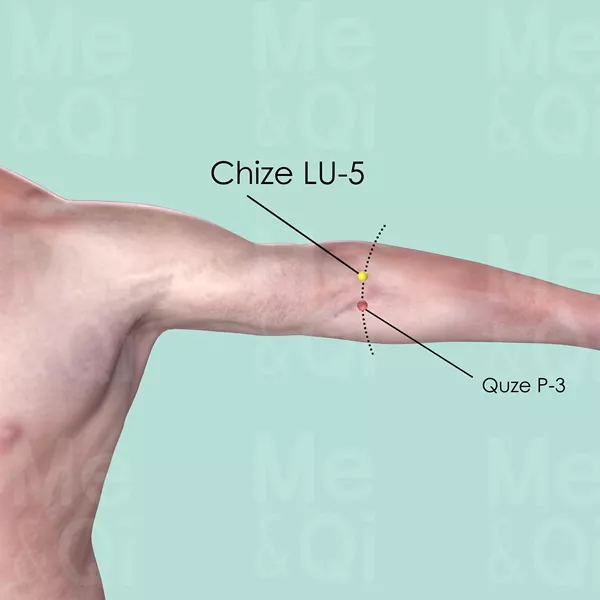
Chize LU-5
On the cubital crease, on the redial aspect of the biceps tendon. It can be easily identified when the elbow is slightly flexed.
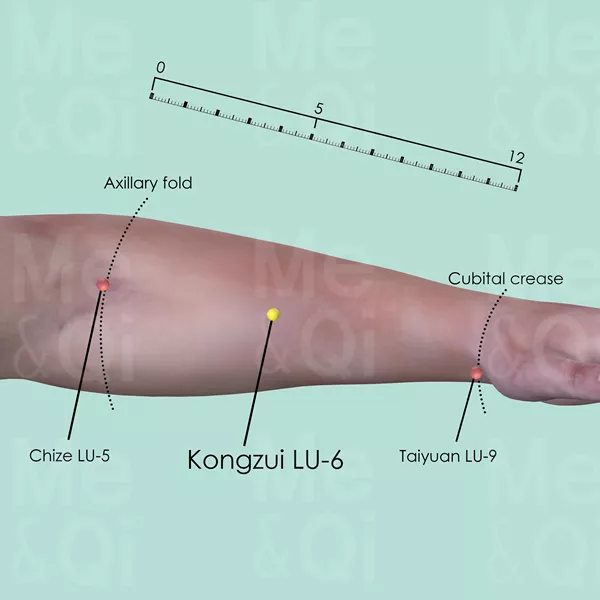
Kongzui LU-6
On the palmar aspect of the forearm, on the line joining Taiyuan LU-9 and Chize LU-5, 7 cun above Taiyuan LU-9.
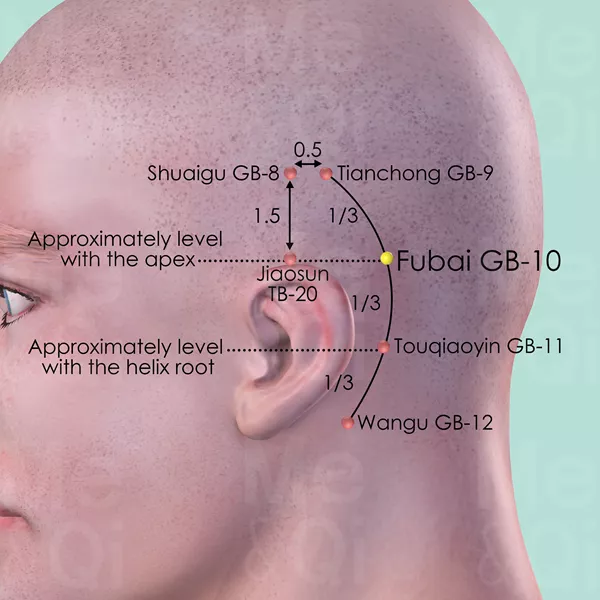
Fubai GB-10
Posterior and superior to the mastoid process, at the junction of the upper third and the two lower thirds of the curved line connecting Tianchong GB-9 and Wangu GB-12.
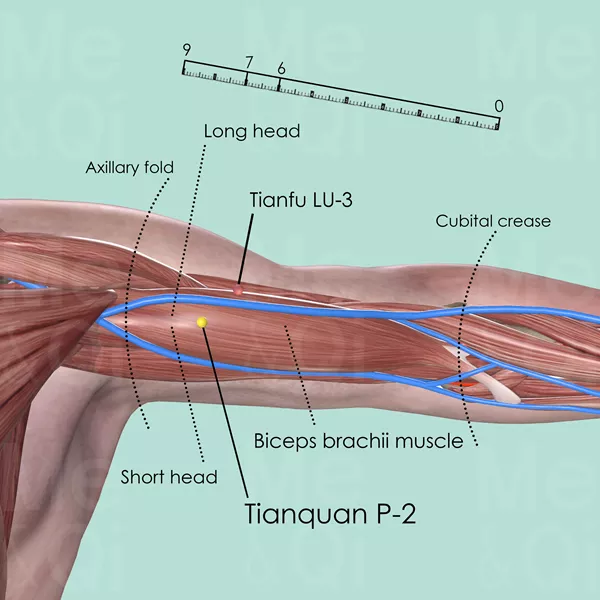
Tianquan P-2
2 cun below the end of the anterior axillary fold, between the two heads of biceps brachii muscle.
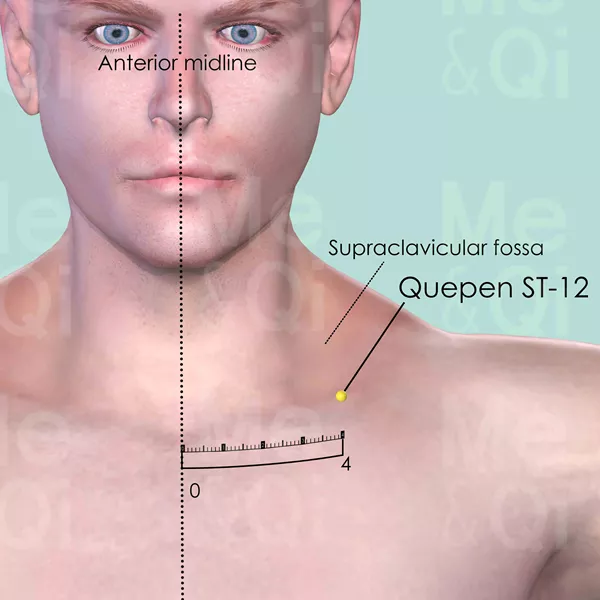
Quepen ST-12
About 4 cun lateral to the anterior midline, in the supraclavicular fossa, superior to the midpoint of the clavicle.

